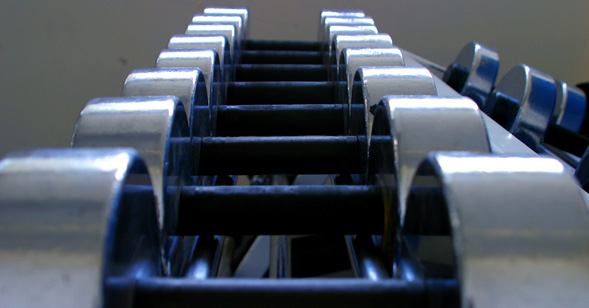
Escalating Density Training For Fat Loss And Muscle Gain
Escalating Density Training (EDT) was created by the strength and conditioning specialist Charles Staley and is a highly effective fat loss and muscle building training method.
Staley theorised that “in order to increase muscle mass, you either have to do MORE work in the SAME time or the SAME amount in LESS time”. The basis of EDT is to gradually challenge your body/muscles to do more work within a specified time period.
What is involved in an EDT workout?
Generally an EDT workout consists of two 20 minute sessions (or three 15 minute sessions) separated by a short 5-10 minute rest. In each session you will perform two exercises, with a total of four (or six) exercises for the full workout.
Ideally you would choose compound exercises (exercises that use multiple joints) because compound movements are the most effective at promoting lean muscle maintenance/gain and fat loss.
In each 20 (or 15) minute session you alternate between the two exercises, until you run out of time. The objective of each time you repeat the workout is to simply perform more total repetitions in the same time period.
Benefits of EDT
- Fixed training time – helping you keep motivated throughout the workout because you know exactly when the hard work will finish.
- It is easy to measure progression (i.e. more reps completed or heavier weight used).
- You don’t need a lot of room or equipment.
- Great to do in groups which can make it competitive and fun.
Things to look out for when performing EDT
- You need to be skilled enough in the exercises in order to get the best results.
- As fatigue sets in technique can begin to suffer. This needs to be monitored. You need to maintain the quality of each exercise, whilst increasing/maintaining a high quantity of each exercise.
Tips for performing your own EDT workout
- Select compound exercises – either opposing muscle groups or upper/lower body.
- Complete 5 reps with a 10 rep maximum load (meaning the weight you are using is based on you being able to do a maximum of 10 repetitions of that exercise).
- Keep alternating between exercises and maintain the same weight used.
- As fatigue sets in the number of reps you can perform will drop and rest periods will increase.
- Keep count of the total number of reps for each exercise, and count the total number of reps after each 20 or 15 minute session.
- The goal is to beat this number in your next workout.
- Apply the 20/5 rule to your workouts, meaning as soon as you can increase the total number of reps by 20%, start the next workout with 5% more weight.
